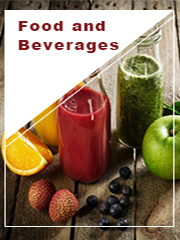Report overview
Food ingredients and dietary supplements having a combination of both prebiotics and probiotics are termed as synbiotic foods.
This report aims to provide a comprehensive presentation of the global market for Synbiotic Foods, with both quantitative and qualitative analysis, to help readers develop business/growth strategies, assess the market competitive situation, analyze their position in the current marketplace, and make informed business decisions regarding Synbiotic Foods. This report contains market size and forecasts of Synbiotic Foods in global, including the following market information:
Global Synbiotic Foods Market Revenue, 2018-2023, 2024-2032, ($ millions)
Global Synbiotic Foods Market Sales, 2018-2023, 2024-2032, (K Units)
Global top five Synbiotic Foods companies in 2022 (%)
The global Synbiotic Foods market was valued at US$ 1914.4 million in 2022 and is projected to reach US$ 2378.1 million by 2029, at a CAGR of 3.1% during the forecast period. The influence of COVID-19 and the Russia-Ukraine War were considered while estimating market sizes.
Increasing health issues in the rising population has increased the demand for functional food with enriched nutrient superiority and linked a health benefit which has uplifted the demand for synbiotic foods in the market.
We surveyed the Synbiotic Foods manufacturers, suppliers, distributors and industry experts on this industry, involving the sales, revenue, demand, price change, product type, recent development and plan, industry trends, drivers, challenges, obstacles, and potential risks.
Total Market by Segment:
Global Synbiotic Foods Market, by Type, 2018-2023, 2024-2032 ($ Millions) & (K Units)
Global Synbiotic Foods Market Segment Percentages, by Type, 2022 (%)
Dairy and Frozen Desserts
Bakery and Confectionary
Snacks
Beverages
Dietary Supplements
Global Synbiotic Foods Market, by Application, 2018-2023, 2024-2032 ($ Millions) & (K Units)
Global Synbiotic Foods Market Segment Percentages, by Application, 2022 (%)
Supermarket
Convenience Store
Online Sales
Other
Global Synbiotic Foods Market, By Region and Country, 2018-2023, 2024-2032 ($ Millions) & (K Units)
Global Synbiotic Foods Market Segment Percentages, By Region and Country, 2022 (%)
North America
US
Canada
Mexico
Europe
Germany
France
U.K.
Italy
Russia
Nordic Countries
Benelux
Rest of Europe
Asia
China
Japan
South Korea
Southeast Asia
India
Rest of Asia
South America
Brazil
Argentina
Rest of South America
Middle East & Africa
Turkey
Israel
Saudi Arabia
UAE
Rest of Middle East & Africa
Competitor Analysis
The report also provides analysis of leading market participants including:
Key companies Synbiotic Foods revenues in global market, 2018-2023 (Estimated), ($ millions)
Key companies Synbiotic Foods revenues share in global market, 2022 (%)
Key companies Synbiotic Foods sales in global market, 2018-2023 (Estimated), (K Units)
Key companies Synbiotic Foods sales share in global market, 2022 (%)
Further, the report presents profiles of competitors in the market, key players include:
Daflorn
Chr. Hansen
SKYSTONE FEED
Behn Meyer Holding
NewLeaf Symbiotics
Yakult Pharmaceutical
Outline of Major Chapters:
Chapter 1: Introduces the definition of Synbiotic Foods, market overview.
Chapter 2: Global Synbiotic Foods market size in revenue and volume.
Chapter 3: Detailed analysis of Synbiotic Foods manufacturers competitive landscape, price, sales and revenue market share, latest development plan, merger, and acquisition information, etc.
Chapter 4: Provides the analysis of various market segments by type, covering the market size and development potential of each market segment, to help readers find the blue ocean market in different market segments.
Chapter 5: Provides the analysis of various market segments by application, covering the market size and development potential of each market segment, to help readers find the blue ocean market in different downstream markets.
Chapter 6: Sales of Synbiotic Foods in regional level and country level. It provides a quantitative analysis of the market size and development potential of each region and its main countries and introduces the market development, future development prospects, market space of each country in the world.
Chapter 7: Provides profiles of key players, introducing the basic situation of the main companies in the market in detail, including product sales, revenue, price, gross margin, product introduction, recent development, etc.
Chapter 8: Global Synbiotic Foods capacity by region & country.
Chapter 9: Introduces the market dynamics, latest developments of the market, the driving factors and restrictive factors of the market, the challenges and risks faced by manufacturers in the industry, and the analysis of relevant policies in the industry.
Chapter 10: Analysis of industrial chain, including the upstream and downstream of the industry.
Chapter 11: The main points and conclusions of the report.
